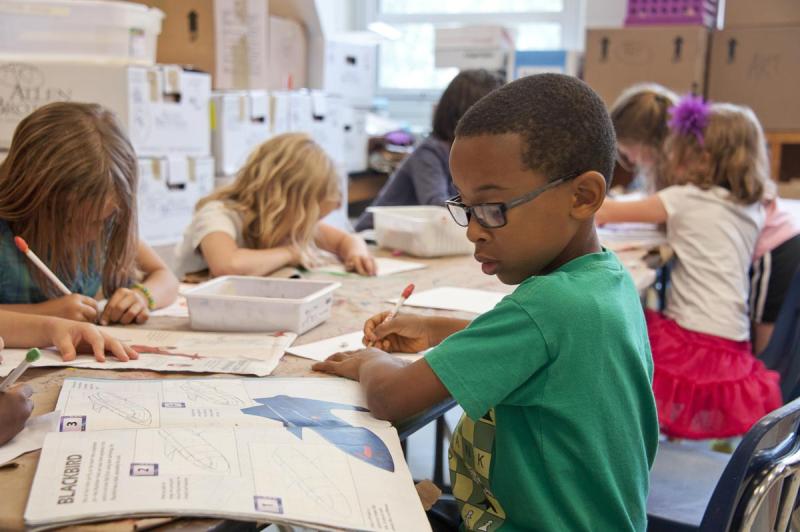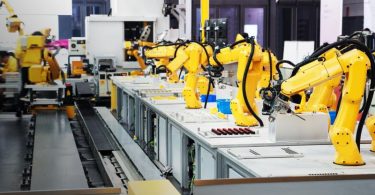High schools are traditional schools for students in grades 9–12, and they focus on giving a well-rounded education in many different subjects. They help students prepare for college or the job market by emphasising academic performance and standardised tests. On the other hand, model schools are innovative schools meant to show how teaching and learning should be done. They often offer best practices, new ways to teach, and advanced ways to use technology in order to improve education as a whole. Even though both types of schools teach students, model schools put more emphasis on experimentation and new ideas to improve the learning experience and find solutions that can be used in larger educational systems.
What is High School?
High school is a secondary school for students in grades 9 through 12, usually between the ages of 14 and 18. High schools have a wide-ranging curriculum that includes maths, science, social studies, literature, and languages, among other things. High schools’ main goal is to help students develop academically and personally to prepare them for college or the workforce.
High schools often offer courses in areas like art, music, physical education, and vocational training in addition to the core subjects. This gives students a chance to explore their interests and talents. High school students can also participate in extracurricular activities like sports, clubs, and community service projects, which help them grow and develop as a whole.
High schools put a lot of weight on how well students do in school. Their grades, scores on standardised tests, and overall achievements play a significant role in deciding what they can do after high school. Usually, to graduate from high school, you have to finish a particular set of classes and, in some cases, pass standardised tests. In the end, high school aims to give students the knowledge, skills, and experiences they need to be responsible, useful members of society.
What is Model School?
Model schools are innovative places of learning meant to show how teaching and learning should be done. These schools show off best practices, cutting-edge teaching methods, and creative ways to use technology to improve education. Model schools are often places where educational research and experiments are done to find solutions that can be used in a broader range of educational settings.
The main goal of a model school is to give students a well-rounded, high-quality education that puts equal weight on academic excellence, personal growth, creativity, and problem-solving skills. Model schools often use learner-centred methods, which give each student their learning plan and encourage them to work together.
Model schools may have a unique focus, like science and technology, the arts, or social-emotional learning. Their curricula are often made to be interdisciplinary, connecting different subjects in meaningful ways. They try to make a safe and welcoming place to learn where students feel safe taking risks, asking questions, and looking into things that interest them.
Model schools place emphasis on developing well-rounded pupils by providing them with chances for extracurricular activities, community service, and character education in addition to a rigorous academic curriculum. By showing what works well in education and being leaders in their field, model schools hope to inspire and inform other schools and, ultimately, help improve education as a whole.
Difference Between High School and Model School
High schools are the typical educational institutions that prepare students in grades 9-12 for further education or the workforce through a rigorous academic curriculum. In contrast, model schools are forward-thinking institutions that exhibit superior methods of instruction and the most recent technological advancements in the classroom. While both conventional and model schools provide their pupils with an education, the latter emphasises risk-taking, novel pedagogical strategies, and student empowerment. Successful educational practices established at one model school are generally disseminated to other schools.
Here is how High and Model Schools differ:
Teaching Approach
Model schools use creative strategies and progressive pedagogies, while conventional high schools stick to tried-and-true practices.
Curriculum Focus
Model schools could place emphasis on science, the arts, or social and emotional learning in addition to the standard academic subjects taught in high schools.
Experimentation
While high schools often stick to established procedures, model schools work as laboratories for educational research, testing new ideas and methodologies.
Technology Integration
High schools may have varied degrees of technology usage, but it is a priority of model schools.
Learning Environment
While high schools often take different approaches to promote pleasant learning environments, model schools aim to create a nurturing, inclusive, and collaborative atmosphere.
Personalisation
While high schools are often more standardised, model schools increasingly adopt personalised learning strategies.
Interdisciplinary Connections
Instead of teaching subjects in isolation, as is common in high schools, model schools place emphasis on making meaningful connections between them.
Best Practices
While high schools are often at the forefront of educational innovation, model schools serve as examples of excellent practices for other institutions.
Educational Outcomes
High schools often place a greater emphasis on academic accomplishment, whereas model schools prioritise academic excellence and personal growth equally.
Influence on Education
Unlike high schools, which are primarily concerned with the education of their students rather than with changing the educational environment at large, model schools seek to motivate and inform other schools in order to better education as a whole.






